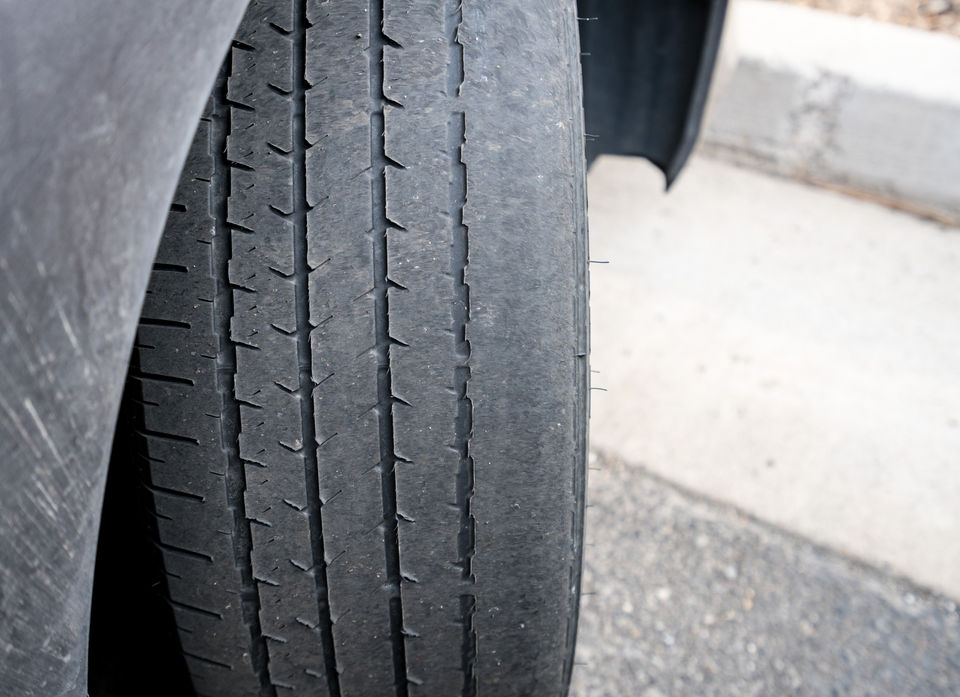
Uneven Tyre Wear - What Are The Causes? [+ How To Avoid It]
Have you noticed uneven wear on your vehicle’s tyres? It’s a surprisingly common issue that many vehicle owners face.
It can lead to various problems, such as reduced traction, decreased fuel efficiency, and compromised safety. Understanding the cause of uneven tyre wear and taking preventative measures is crucial to ensuring optimal tyre performance and extending their lifespan.
What is Uneven Tyre Wear?
Uneven tyre wear refers to the uneven tread wear pattern across the surface of a tyre.
Instead of wearing evenly, certain areas of the tyre experience more wear and tear than others. This can result in specific parts of the tyre becoming bald or showing signs of excessive wear, while other areas may remain relatively unaffected.
Types of Tyre Wear
Toe Wear
Toe wear occurs when the front edge of the tyre tread wears more than that of the rear edge. This type of wear is commonly a result of wheel misalignment, specifically when the wheels are angled towards each other (toe-in) or away from each other (toe-out).
Camber Wear
Camber wear is characterised by the inside or outside edge of the tyre wearing more than the centre portion. In this case, the wheel tilts inward or outward from a vertical position, resulting in the uneven tyre wear pattern.
Edge Wear
Edge wear happens when the outer or inner edges of the tyre tread wear faster than the centre. It can be a result of various factors, including improper inflation, misaligned wheels, or worn suspension components.
Centre Wear
Centre wear occurs when the centre portion of the tyre tread wears more than the outer edges. It can be caused by overinflation or a higher load on the tyres than their recommended capacity.
Cup Wear
Cup wear refers to the formation of a cup-shaped depressions or indentations on the tyre tread surface. Alignment issues, suspension problems, and worn-out shock absorbers collectively contribute to the development of this wear pattern.
Patch Wear
Patch wear is characterised by specific patches or sections of the tyre tread wearing more rapidly than others. It can occur due to factors such as imbalanced wheel rotation, excessive braking or aggressive driving habits.
Possible Causes Of Uneven Tyre Wear
Alignment Issues
Improper wheel alignment is one of the primary causes of uneven tyre wear. When the wheels are not aligned correctly, the tyres experience uneven pressure and friction, leading to accelerated wear on specific areas of the tread.
Improper Inflation
Tyres that are either overinflated or underinflated can wear unevenly. Overinflation causes the centre of the tyre tread to bear more load, resulting in centre wear. Underinflation puts more stress on the outer edges, leading to edge wear.
Suspension Issues
Worn or damaged suspension components can impact tyre wear. Faulty shocks or struts can cause cupping or patch wear, while worn-out control arms can lead to camber wear. Maintaining a healthy suspension system is essential for even tyre wear.
Out of Balance
When a tyre is out of balance, it creates vibrations that can cause uneven wear patterns. This typically occurs when the weight distribution around the wheel and tyre assembly is not uniform. Tyres should be balanced periodically to prevent irregular wear.
Learn about some tyre tread wear indicators to determine if your tyre has issues.
Prevention of Tyre Wear
Wheel Alignment
Regular wheel alignments ensure that the angles are correctly set according to the manufacturer’s specifications. Proper alignment helps distribute the weight and forces evenly across the tyres, reducing the chances of uneven wear.
Tyre Rotation
Rotating the tyres at regular intervals promotes even wear by allowing different tyres to take on various positions on the vehicle. This helps equalise tread wear and extends the overall lifespan of the tyres.
Proper Inflation
Maintaining the recommended tyre pressure is vital for optimal tyre performance.
Regularly checking and adjusting tyre pressure helps ensure even tread wear and enhances fuel efficiency. Consult the vehicle owner’s manual or the tyre’s manufacturer’s guidelines for the correct inflation pressure.
Why Should You Address Uneven Tyre Wear Promptly
Addressing uneven tyre wear promptly is essential for several reasons. First, it ensures safety by maintaining adequate traction and grip on the road.
Second, it helps maximise tyre lifespan and reduces the frequency of tyre replacements, saving money in the long run.
Lastly, addressing the root causes of uneven tyre wear can prevent further damage to suspension components and improve vehicle performance.
Conclusion
Uneven tyre wear can significantly impact the performance, safety, and longevity of your vehicle’s tyres.
By understanding the different types of tyre wear, identifying the possible causes, and taking preventative measures like wheel alignment, tyre rotation, and proper inflation, you can mitigate the risk of uneven wear.

Louis
I'm Louis, an engineer passionate about helping Australians choose better tyres for their vehicles!
